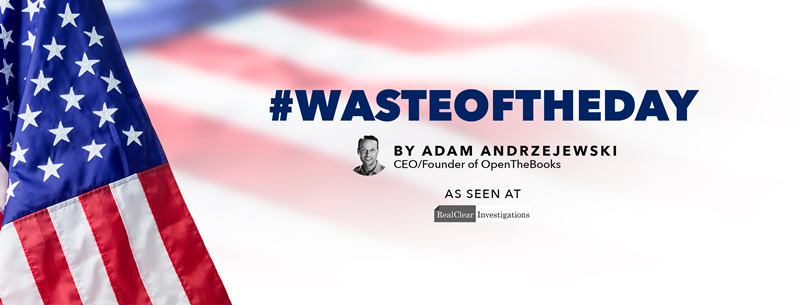
Eliminate the $175.6 Million Corporate Welfare Market Access Program
January 1, 2024
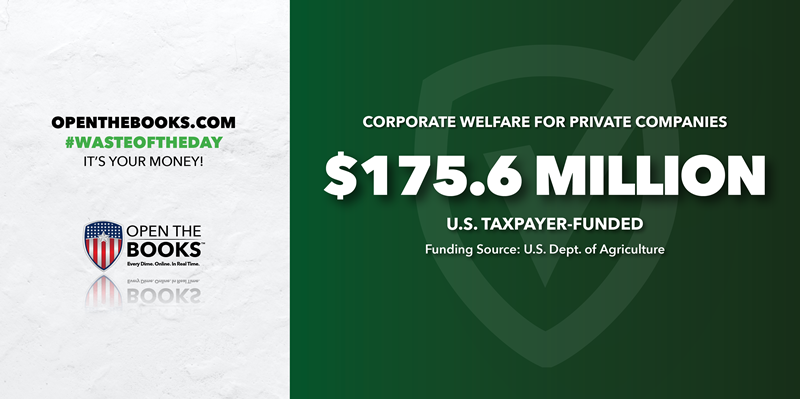
If Congress voted to eliminate the Market Access Program — what Citizens Against Government Waste called “the federal government’s most blatant examples of corporate welfare” — the U.S. could save $175.6 million a year.
Over the past decade, the Department of Agriculture program has given nearly $2 billion in taxpayer money to help agriculture trade associations, farmer cooperatives, and individual companies advertise their products overseas, according to Citizens Against Government Waste in its annual “Prime Cuts” report, which recommends ways to reduce the record national debt.
In FY 2023, MAP gave $175.6 million to successful companies and conglomerates like Blue Diamond ($5.1 million), Cotton Council International (CCI) ($13.9 million), National Sunflower Association ($985,000), Pet Food Institute ($1.4 million), Sunkist Growers, Inc. ($2 million), Welch Foods, Inc. ($677,662), and the Wine Institute ($6.7 million), CAGW reported.
While then-President Barack Obama’s FY 2012 budget proposed a 20% cut to the program, it was struck down in the Senate.
A June 2012 report from former Sen. Tom Coburn (R-Okla.) on the program disclosed that some of the $20 million that was given to the Cotton Council International in 2011 was used to create an Indian reality TV show wherein designers created clothing made from cotton.
The show was apparently intended to promote cotton generally, not necessarily cotton from the U.S. However, India doesn’t need U.S. cotton because the country is a net exporter of the product and produces twice the amount of U.S. cotton growers.
The Market Access Program has given more than $190 million to Cotton Council International over 13 years. “It is long past time to eliminate MAP,” CAGW wrote.
Planned Parenthood, Other Abortion Providers Got $2 Billion From Feds
January 2, 2024
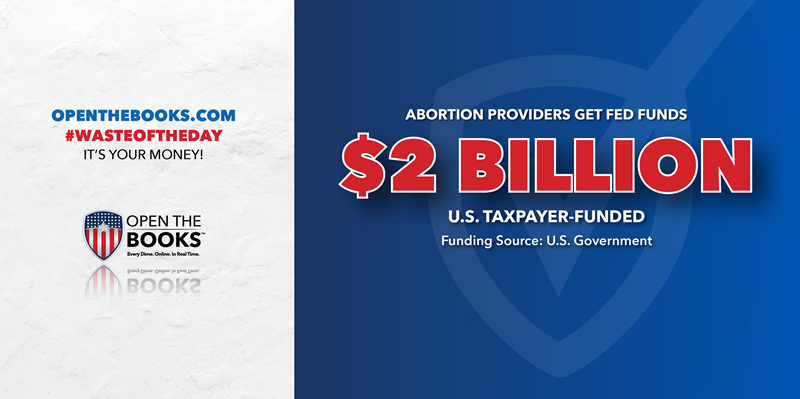
The federal government gave almost $2 billion to abortion advocacy groups and providers between 2019 and 2021, according to a Government Accountability Office report.
Planned Parenthood received the vast majority of the funding — $1.8 billion. The International Planned Parenthood Federation received just over $2 million, MSI Reproductive Choices received $145 million, and four domestic regional abortion providers received $107.7 million, according to the report from the federal watchdog.
Planned Parenthood affiliates also received $90.4 million in forgiven Paycheck Protection Program loans during the COVID-19 pandemic.
During this three-year period, Planned Parenthood performed 1.11 million abortions.
Sen. Marsha Blackburn (R-TN) is a member of the Republican coalition in the House and the Senate that originally requested the report from the GAO.
“It is appalling that big abortion providers are continuing to receive billions of dollars in federal taxpayer funding,” she said. “While small businesses struggled to make ends meet during the pandemic, Planned Parenthood illegally siphoned over $90 million from the Paycheck Protection Program, specifically designed to help our mom and pop shops keep their doors open,” Breitbart reported.
Federal law prohibits the federal funding of abortions, but doesn’t prohibit funding abortion providers outright. Blackburn, along with Reps. Vicky Hartzler (R-MO) and Chris Smith (R-NJ) led 142 Congressional members in January 2022 in requesting the GAO report that details federal funding for abortion advocacy groups in fiscal years 2019 through 2021.
Here's a breakdown of federal funding to Planned Parenthood: reimbursements from Medicaid, Medicare, and CHIP Reimbursements ($1.5 billion), federal funding in grants and cooperative agreements ($148.5 million), and loans forgiven in the Paycheck Protection Program ($90.4 million).
According to the GAO report, annual federal grant money to Planned Parenthood has quadrupled since 2019, a difference between the Trump and Biden administrations.
A January 2023 poll from Marist shows that 60% of Americans oppose using taxpayer dollars to fund abortions. While the organizations can argue the dollars didn’t pay for abortions, money is fungible, and the money helped their organizations operate and provide abortions.
Loudon County Schools Spokesperson's Sweet Contract
January 3, 2024
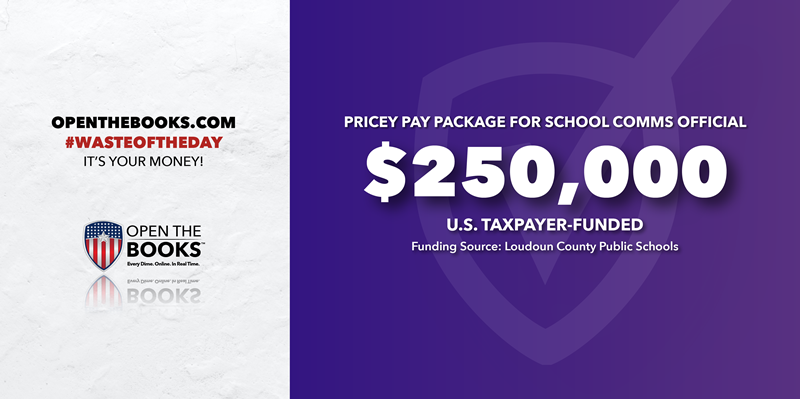
The spokesperson for Loudoun County Public Schools makes more than a quarter of a million dollars. — more than the Virginia governor, the White House Press Secretary, and many federal government attorneys are earning.
Loudoun County Public Schools hired Natalie Allen as chief communications officer, using taxpayer funds to pay her a salary north of a quarter million dollars — plus a monthly vehicle allowance, a monthly data allowance and moving costs, ABC News7 reported.
Allen’s position was created around the same time the school board hired Superintendent Aaron Spence. Spence and Allen worked with each other in Virginia Beach City Public Schools.
Allen also makes far more than other members of the school district communications office, even those with far more experience, the news outlet reported.
LCPS Communications Supervisor Wayde Byard earns a salary of $176,062 and he’s worked for the district for more than 20 years, while Allen’s $251,000 — plus perks — comes from around 12 years of communication experience.
The district public information officer, who has with more than 23 years of communication experience, makes $176,062, and the director of communications makes just over $201,000, the TV station reported.
Allen’s pay is far too high for a school district employee, and that’s on top of three already well-paid communications — the Loudoun County Public Schools should serve its students and taxpayers better.
Contractor Devours Agriculture Department Funds
January 4, 2024
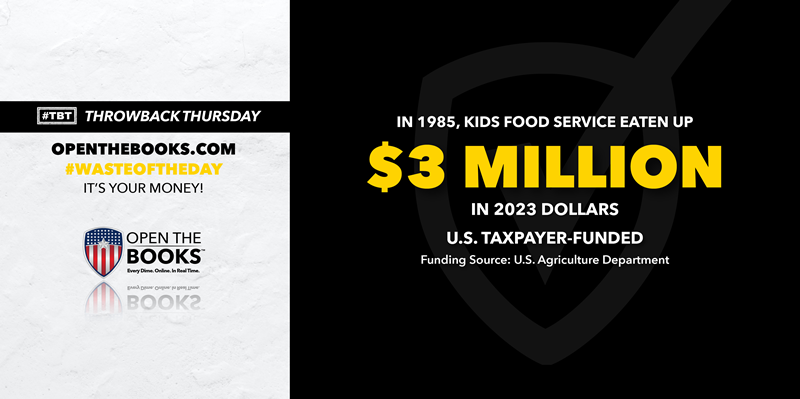
Throwback Thursday!
In 1986, the Department of Agriculture gave $1.1 million — over $3 million in 2023 dollars — to the contractor running its Food and Nutrition Service for low-income hungry children, who spent it on covering their losses instead of feeding needy kids.
For this wasteful spending, Sen. William Proxmire, a Democrat from Wisconsin, gave the Food and Nutrition Service a Golden Fleece Award in 1983. He gave awards to wasteful and nonsensical spending, eventually handing out 168 Golden Fleece Awards between 1975 and 1988.
Auditors in 1981 found the private company that had the contract to feed hungry children wasn’t operating properly. “The multitude of problems,” as Proxmire put it, included that “the private firm’s accounting system was a joke, and federal money was being spent without a paper trail to show who got it and why.”
This issue was also spotted in 1979. The auditors recommended that the Department of Agriculture “immediately help the company improve its management, or failing that, terminate the contract,” Proxmire described.
But the Food and Nutrition Service acted as typical bureaucrats in delaying and passing the buck, saying to watch for improvements in next year’s audit.
In 1981, the auditors found that $71,000 in federal dollars had been used to pay the company’s bills, and by 1985 that had grown to $1.1 million. Later that year, the company declared bankruptcy.
“Now the taxpayers will be standing in line in bankruptcy court to see if any of their money can be recovered,” Proxmire said.
$189 Billion In Pandemic Aid Can Be Used for Non-Covid Costs
January 5, 2024
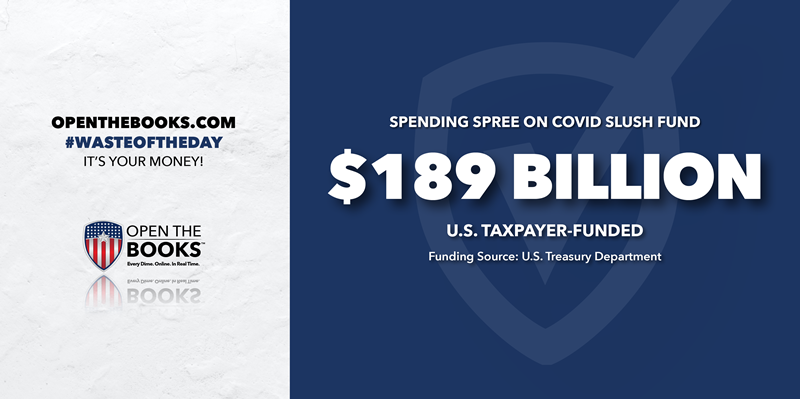
Of the $325 billion given to states and local governments to help cover costs stemming from the effects of the Covid-19 pandemic, less than half of that has been spent. And instead of returning the taxpayer funds to the federal government, a new law from the Department of the Treasury allows states and local governments to spend that money on essentially anything.
The law also applies to an additional $25 million given to tribal governments ($20 billion) and U.S. territories ($4.5 billion).
Under the American Rescue Plan Act, which allocated the funds, state and local governments must obligate the funds before the end of 2024. The new rule allows governments to count funds as obligated if they are merely reported to the Treasury by April 2024.
In other words, if states and local governments and the other entities haven’t needed to spend all the money they received for pandemic relief, they can just say it’s been obligated and keep it.
The 50 states and Washington D.C. received $195 billion, and local governments received $130 billion, according to the U.S. Government Accountability Office.
States only spent 45% of the pandemic aid ($88.2 billion) they were given, and local governments only spent 38% ($47.9 billion). That leaves $189 billion of unspent funds that can be used for whatever these governments want, including updating swimming pools, golf courses and sports stadiums at a time when the country's national debt has exceeded $33 trillion.
Critics have referred to it as a President Joe Biden “slush fund” that allows states and local governments to go on spending sprees with money that was supposed to be for emergency pandemic relief.
“Treasury’s ‘Hoarding Rule’ is an outright abuse of power and should be immediately reversed,” the Economic Innovation Policy Center said. “Congress should assert its intentions. Stakeholders (including taxpayers) should engage in the notice and comment period, which is set to end on December 20,2023, regardless of the rule already taking effect.”
The #WasteOfTheDay is presented by the forensic auditors at OpenTheBooks.com.